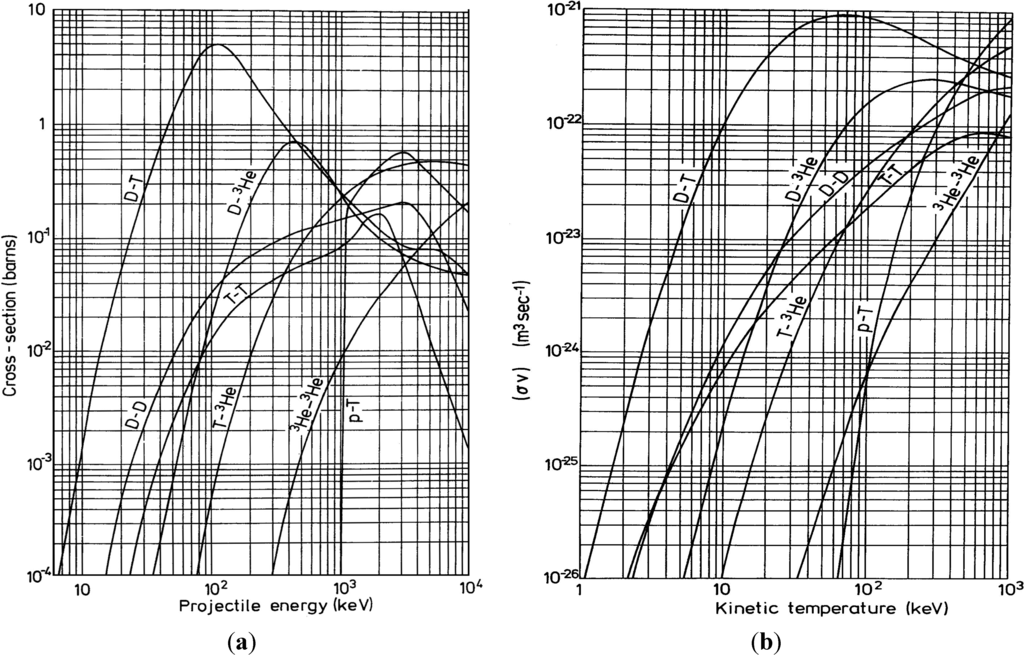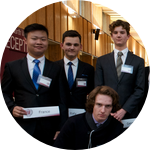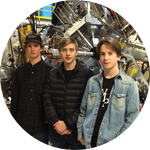About This Project
Nuclear fusion is one of the most captivating clean energy sources of our time. Many fusion reactors have been built with the simplest being the Farnsworth Fusion Reactor (Fusor). The Fusor uses Inertial Electrostatic Confinement (IEC) to contain a plasma in which Deuterium ions are accelerated towards a central point where they collide and fuse, releasing energy. We hope to research this process and hypothesize methods to improve its efficiency. Click here if you wish to donate.
Ask the Scientists
Join The DiscussionWhat is the context of this research?
Viable, clean fusion energy is not far away, it is not a question of if fusion energy will ever become a reality, but when. Many fusion reactors have been built with the most simple being the Farnsworth Fusor. Philo Farnsworth conceived the Farnsworth Fusor in the 1950’s with the idea of using IEC to contain fusion reactions that would produce energy. Major funding for the Fusor was cut off in the late 1960’s and little research has been done since then. Many questions and possibilities remain for the Fusor, yet most fusion researchers are focused on the far more complex, government funded fusion reactors, such as the Tokamak Reactor. This fact has inspired us to pursue the unknowns of the Fusor through our own testing and research.
What is the significance of this project?
The issue of global warming is one that has been a concern of all scientists for many years. The evidence is clear that the burning of fossil fuels is a direct cause of the Earth's warming. Fusion energy is one of the many alternative energy sources that have been developed to replace fossil fuels. Fusion energy is unique because a nuclear fusion reactor that produces more energy than it consumes would solve the Earth’s energy problem, it is clean, non-weather dependent, and it’s fuel, Deuterium, will last us millions of years. The question is, how will a fusion reactor that produces energy be built? The answer lies within research and funding, the planet needs clean energy which is why fusion research is so crucial to our future.
What are the goals of the project?
Researching plasma and nuclear physics through the use of the Fusor is the main goal of this project. This will be done through the construction of an Inertial Electrostatic Device (Fusor) which will be used to conduct fusion experiments that will include the measured factors of voltage, current, pressure and neutron production. IEC is a branch of plasma research concerned with the use of field ionization in order to create a plasma which is used to accelerate and fuse ions. Under the certain condition of this heated plasma, these accelerated ions may break their coulomb barrier and fuse, releasing energy. We hope to research the complications of this process and hypothesize on how the Fusor may increase the number of fusion reactions taking place.
Budget
Our budget items are crucial in constructing the Fusor, which in itself allows fusion research to be completed. The Fusor system consists of Ultra High Vacuum (UHV) equipment, gas-line components, high voltage (HV) equipment, the fusion chamber, radiation detection equipment and parts to ensure safety. All of these components cannot be acquired through high school science equipment suppliers, they are industrial and scientific research level parts that together cost thousands of dollars.
Endorsed by
Meet the Team
Samuel Samida-Pugh
Sam Samida-Pugh is a 16 year old student currently enrolled in grade 11, he has a strong passion and interest in science, specifically physics and engineering. This interest in science has led Sam and Jared Schellenberg to establish the “Applied Science Club” at Earl Marriott Secondary where they design and build scientific projects. The Farnsworth-Hirsch Fusor is Sam’s current project which he began working on in September of 2016. This advanced project was inspired through Sam’s fascination of physics and has continued through his persistence and motive to achieve something truly unique that would advance his knowledge and experience. Outside of the sciences, Sam participates in Model United Nations (MUN) conferences where he engages his interest in debate and politics. During the Winter, Sam enjoys skiing and in the Spring he plays rugby. A favourite pastime of Sam’s is playing the guitar and piano, he also enjoys listening to a wide array of music. Sam knows that the Fusor is a complex project for high school students to complete but is confident that Jared Schellenberg, McCartney Wade and him, have what it takes to complete this project and take Progressive Fusion Solutions to new heights. In 15 years Sam sees himself working as an engineer, operating his own business or doing research in the field of nuclear physics or astrophysics.
Jared Schellenberg
Jared Schellenberg is 16 years old and currently in grade 11 and thoroughly enjoys the Sciences and English. When it comes down to science, Jared mostly enjoys chemistry and physics and loves learning about all the aspects of different science concepts such as the fusion. Among other things, Jared participates and organizes the “Applied Science Club” in which Sam Samida-Pugh and him founded together at their school, together, they often do projects such as creating jacobs ladders and a cloud chamber. Even though these small projects are nowhere near the level of the Farnsworth Fusion Reactor, he is increasingly growing in his knowledge of the fusion reactor and its many workings and he is confident in taking on a project as large as this. The reason Jared found this particular project interesting is because fusion energy is a clean and efficient way to power the future, the only problem being that the energy being produced is only a small fraction of the energy being put in to start the reactions. Jared believes that with the completion of this project he will be able to gain more knowledge of nuclear fusion and possibly contribute to the success of fusion energy. In 15 years Jared sees himself advancing onto the fields of chemistry or physics by becoming a geneticist or an aerospace engineer.
McCartney Wade
McCartney Wade is a hardworking, 16 year old who attends Semiahmoo Secondary School, in White Rock, British Columbia. At school, he enjoys participating in extra-curricular activities such as Model UN club as well as robotics club. He has worked hard to contribute to the community through volunteer work at locations including a children's gymnastics studio and his local church. McCartney has a passion for sports, specifically soccer and enjoys playing at a competitive level. He has an interest in science and engineering and how they can improve the state of the environment. Science has always been an interest for McCartney, he is confident and eager to take on this advanced project. He hopes to gain knowledge in business, construction, Farnsworth Fusion, as well as working and cooperating with a team. He is happy with the launch of Progressive Fusion Solutions and believes that it can achieve something truly amazing. McCartney is excited to conduct tests and gain research as a group and hopes to bring light to the capabilities of fusion through published work. He believes that fusion research is a very important step towards clean, efficient power and that fusion will be the world's future energy source. In 15 years McCartney sees himself having a career in particle physics or engineering and working towards helping the environment within either field.
Additional Information
Inertial Electrostatic Fusion Theory
To truly understand what we are doing with our fusion reactor, there needs to be a basic understanding of the theory behind the IEC fusion taking place within the Farnsworth-Hirsch Fusor. In order to achieve this fusion we need to reduce the pressure within the chamber using a vacuum pump, the resulting pressure in the chamber must be at least 1 micron (10e-3 torr). The pressure will be filled back into the chamber with deuterium gas to the pressure of about 10 microns (5-20 microns is ideal). To cause detectable reactions, a supply of electrical power is to be applied to the device which must be at least 20kV at 10mA to create detectable fusion. When the high voltage is applied to the cathode in the center of the chamber, it ionizes the deuterium, turning the deuterium atoms into positive deuterium ions by stripping it of its electrons, this causes the now positive ions to accelerate away from the positively charged outer shell of the chamber and fall through a potential gradient to the negative inner grid (cathode). The inner grid is where the deuterium ions will be the most concentrated and at the highest energy which will result in the majority of the collisions taking place there. These collisions on an electrostatic level puzzle scientists today because they fuse without surpassing their coulomb barrier, this happens through a process called Quantum Tunneling.
Quantum Tunneling is a concept that is not currently fully understood by scientists because it defies the laws of classical physics. Within the fusor, the ions accelerating towards each other are both positively charged and due to their coulomb barrier should not be able to fuse electrostatically at their given energy levels. Quantum tunneling, however, allows the ions to come within a short enough distance of each other that the strong nuclear force takes over the electromagnetic force and allows the ions to fuse.
There are two reactions that have a 50% of occurring when the ions fuse, the first kind of reaction produces a Helium 3 atom (.82 MeV) and a Neutron (2.45 MeV) while the second reaction produces a Tritium atom (1 MeV) and a Proton (3 MeV), there is a third possible reaction which has a 1 in 10,000 chance of happening which produces a Helium 4 atom (He4) and a gamma ray with around 20 MeV of energy between the two particles. In each reaction, minimal amounts of energy is released.
Calculating the behavior of the deuterium ions and how they react with one another is a crucial concept to understand when dealing with fusion. Collisional cross section is needed to calculate the probability of whether two particles will collide with one another. In an example of a d-d collision, it can be assumed that d1 is the target particle and d2 is the incident particle. For a collision between the two particles to occur and therefore fuse, the center of d2 must come within range of d1’s geometrical cross section, σ. This geometrical cross section can be described as a sphere surrounding the particle, the larger the particle, the larger the cross section which therefore leads to a higher chance of collision. The relationship between the energy of a particle and its cross section also plays a significant role in the collision process. In d-d fusion, the increase of energy on the scale of KeV drastically influences the deuterium ion cross section, this continues with the cross sectional slope gradually decreasing all the way until the particle energy has reached roughly 3 Mev where the cross section plummets down to zero.
Deuterium Cross Section Graph

Project Backers
- 2Backers
- 1%Funded
- $20Total Donations
- $10.00Average Donation



